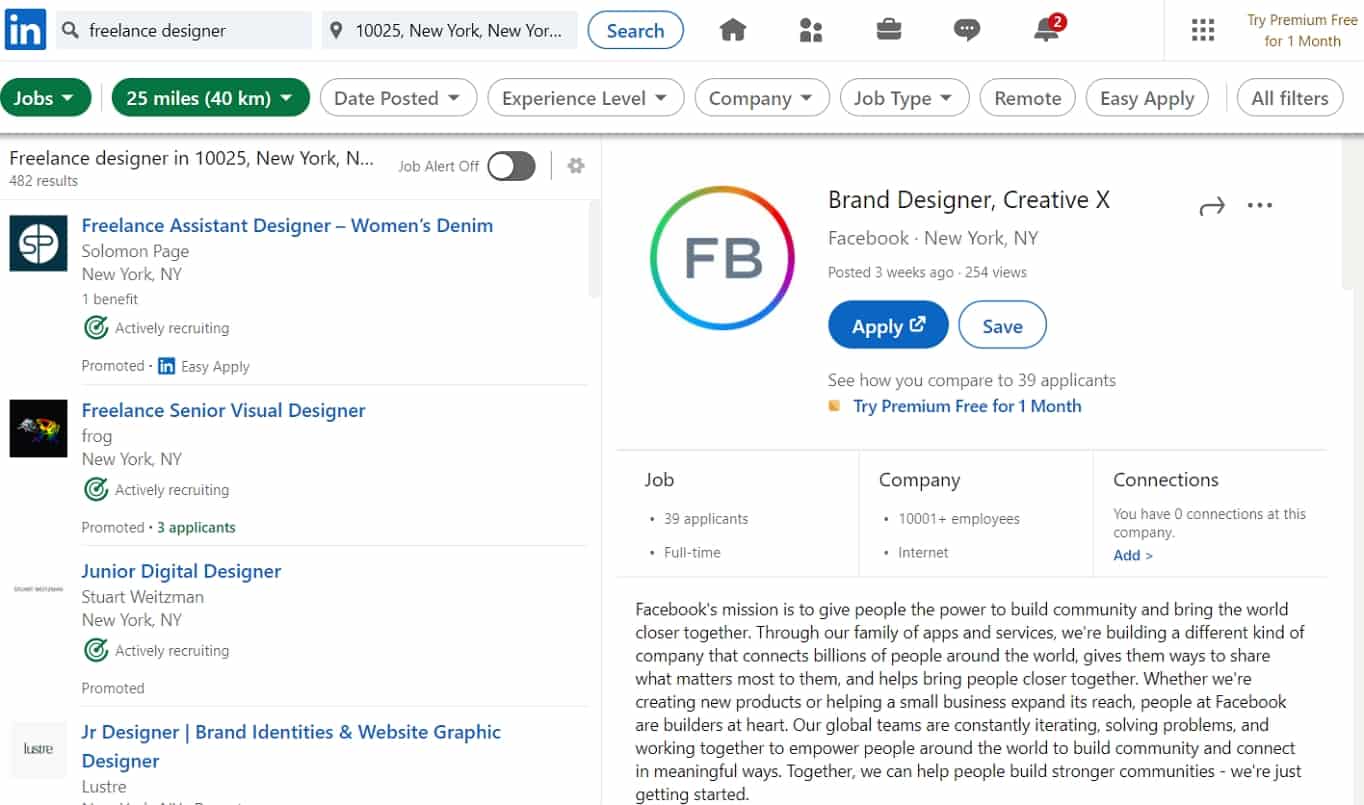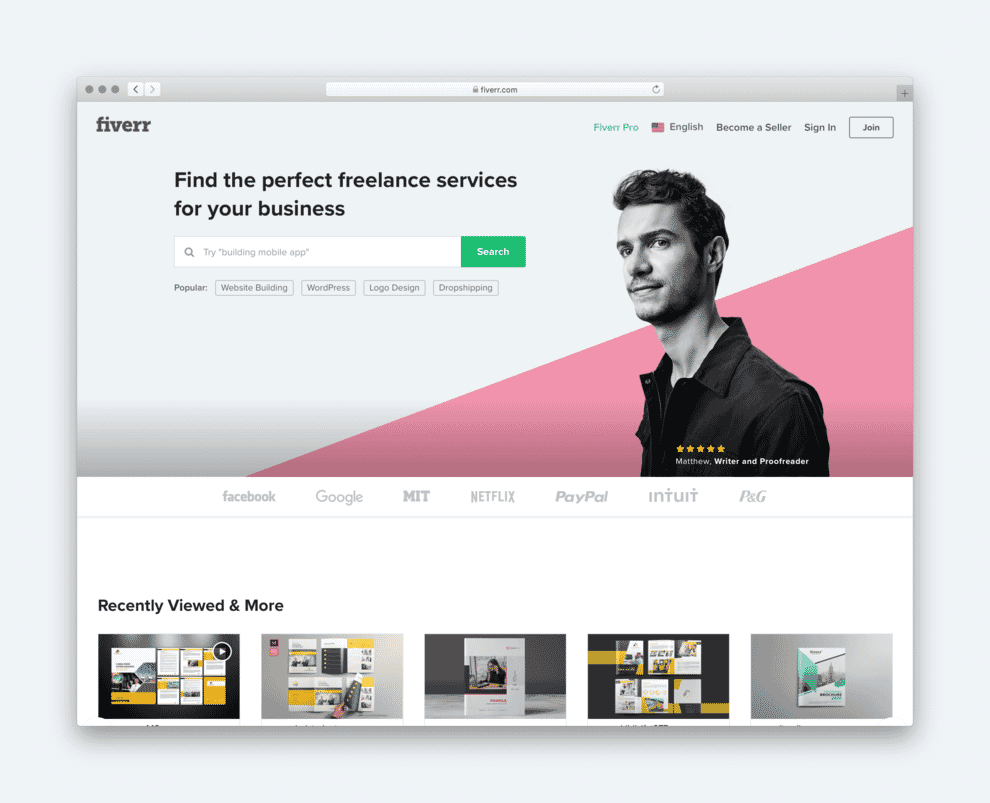To find website design clients, leverage online platforms and network with potential leads. Utilize social media and freelance websites to showcase your work.
Finding website design clients can be challenging, but strategic methods can make it easier. Networking plays a crucial role; attend industry events and engage in online communities. Social media platforms like LinkedIn and Instagram help display your portfolio and connect with potential clients.
Freelance websites such as Upwork, Fiverr, and Freelancer offer a steady stream of opportunities. Building a strong online presence through a personal website showcasing your best work can attract clients. By combining these strategies, you can steadily grow your client base and establish a successful website design business.
The Importance Of Networking
Networking is crucial for finding website design clients. It helps you connect with potential clients and build professional relationships. Networking can lead to referrals and partnerships, expanding your business reach.
Leveraging Social Media
Social media is a powerful tool for networking. Platforms like LinkedIn, Facebook, and Twitter allow you to showcase your work and engage with potential clients. Here are some tips:
- Join relevant groups: Participate in discussions and offer valuable insights.
- Share your portfolio: Post your work regularly to attract attention.
- Engage with followers: Respond to comments and messages promptly.
- Use hashtags: Increase visibility by using industry-specific hashtags.
Attending Industry Events
Industry events provide opportunities to meet potential clients face-to-face. These events can include conferences, workshops, and networking meetups. Here are some strategies:
- Prepare your pitch: Have a brief, engaging introduction about your services.
- Bring business cards: Exchange contact information with new connections.
- Attend workshops: Learn new skills and network with other professionals.
- Follow up: Send a follow-up email to maintain the connection.
Creating A Strong Portfolio
Creating a strong portfolio is essential for attracting website design clients. A well-organized portfolio showcases your skills and experience. It helps potential clients understand your capabilities. Let’s delve into how to create a compelling portfolio.
Showcasing Your Best Work
Your portfolio should highlight your best work. Select projects that demonstrate a range of skills. Include projects with different design styles. This shows your versatility. Make sure to use high-quality images. Visual appeal is crucial in a portfolio.
Here are some tips to showcase your work:
- Choose projects that represent your strengths.
- Include a variety of design styles.
- Use high-resolution images.
- Provide a brief description of each project.
- Mention the tools and technologies used.
Using Case Studies Effectively
Case studies are powerful tools in a portfolio. They provide detailed insights into your design process. A good case study includes the problem, solution, and results. This helps clients understand your approach.
Here’s a structure for an effective case study:
- Introduction: Briefly introduce the client and project.
- Problem: Describe the challenge or requirement.
- Solution: Explain the design process and decisions.
- Results: Highlight the outcomes and benefits.
Using case studies helps build trust. They show your ability to handle real-world challenges. Potential clients can see the value you bring to the table.
Harnessing The Power Of Testimonials
Harnessing the Power of Testimonials can greatly help in finding website design clients. Testimonials build trust and showcase your skills. They provide social proof that you can deliver quality work. Let’s explore how to gather and display testimonials effectively.
Gathering Client Feedback
Collecting testimonials starts with gathering client feedback. After completing a project, ask for feedback. You can use a simple feedback form or an email. Here are some tips to gather useful testimonials:
- Ask specific questions about your work.
- Encourage clients to mention the benefits they received.
- Request permission to use their feedback publicly.
Displaying Testimonials Strategically
Once you have gathered testimonials, display them strategically on your website. Proper placement can enhance their impact. Consider these locations:
- Homepage: Place a few strong testimonials to grab attention.
- Services Page: Display relevant testimonials to support your services.
- Dedicated Testimonials Page: Create a page showcasing all client feedback.
For better visibility, use these HTML tags:
<blockquote>
<p>Client's testimonial here...</p>
<footer>— Client Name</footer>
</blockquote>
Utilizing Online Marketplaces
Online marketplaces offer a great way to find website design clients. They connect you with businesses that need your services. You can showcase your skills and attract potential clients.
Choosing The Right Platforms
Picking the right platform is crucial. Focus on popular sites like Upwork, Fiverr, and Freelancer. These platforms have a large user base and many job postings. Look for websites that specialize in design, like 99designs or Dribbble.
Here’s a comparison table of popular platforms:
| Platform | Specialty | Fee Structure |
|---|---|---|
| Upwork | General Freelancing | 20% on first $500 |
| Fiverr | General Freelancing | 20% of each transaction |
| 99designs | Design Services | Varies by project |
Creating Standout Profiles
Your profile is your online business card. Make it eye-catching and detailed. Use a professional photo. Write a clear and concise bio. Highlight your skills and past projects.
Include keywords like “website design”, “responsive design”, and “UI/UX”. This helps in search results. Show samples of your best work. Add client testimonials if you have them.
Follow these tips to create an effective profile:
- Use a professional photo
- Write a clear bio
- Highlight skills and projects
- Include keywords
- Show sample works
- Add client testimonials
Content Marketing For Lead Generation
Content marketing is a powerful tool for finding website design clients. By providing valuable content, you can attract and engage potential clients. Below are effective strategies to generate leads through content marketing.
Blogging To Demonstrate Expertise
Blogging helps you showcase your expertise in website design. Write posts about common web design challenges and solutions. Share case studies of successful projects. Offer tips and best practices for design. Use SEO techniques to make your blog posts discoverable. Use keywords related to web design in your posts. This way, potential clients can find you through search engines.
| Topic | Description |
|---|---|
| Web Design Trends | Discuss the latest trends in web design. |
| Case Studies | Showcase successful web design projects. |
| Design Tips | Provide actionable tips for better web design. |
Engaging Through Video Content
Video content is a great way to engage potential clients. Create short videos explaining web design concepts. Show behind-the-scenes looks at your design process. Share client testimonials and success stories. Use platforms like YouTube and social media to reach a wider audience.
- Explain web design concepts in simple terms.
- Show your design process to build trust.
- Share client success stories to demonstrate results.
Use video titles and descriptions with relevant keywords. This helps in search engine visibility. Keep videos short and to the point for better engagement.
To find website design clients, your own website must convert visitors. Optimizing your website for conversions ensures potential clients contact you. This involves enhancing user experience and having effective call-to-actions.
Improving User Experience
Improving user experience (UX) starts with a clean design. A clutter-free website makes it easy for visitors to navigate. Use a simple and intuitive layout. Ensure your website loads quickly. Speed is crucial for keeping visitors engaged.
Mobile optimization is a must. Many users browse on their phones. A responsive design ensures your site looks good on all devices. Use clear headings and subheadings. Break content into small, readable chunks.
Use high-quality images that are relevant. Avoid stock photos that look staged. Include testimonials and case studies to build trust. Show your past work and happy clients. These elements can make a huge difference.
Effective Call-to-actions
Effective call-to-actions (CTAs) guide visitors to take the next step. Use clear and direct language in your CTAs. Phrases like “Get a Quote” or “Contact Us Today” work well.
Place CTAs in strategic locations. They should be easily noticeable but not intrusive. Use contrasting colors to make them stand out. Ensure the buttons are large enough to click easily on any device.
Test different CTAs to see which perform best. A/B testing can help you find the most effective wording and placement. Collect data and refine your approach based on results.
Include CTAs in various forms, such as buttons, links, and banners. This keeps options open for different types of visitors. Some may prefer filling out a form, while others might call directly.
| Aspect | Recommendation |
|---|---|
| Page Load Speed | Optimize images and use a fast hosting service. |
| Mobile Optimization | Ensure your site is responsive and user-friendly on all devices. |
| CTAs | Use clear, direct language and strategic placement. |
| Content Layout | Break content into small, readable chunks with clear headings. |
Partnering With Agencies
Finding website design clients can be tough. Partnering with agencies can help. Agencies often need extra design help. They have clients who need websites. This partnership can be great for both.
Finding Complementary Partners
Look for agencies that need web designers. They may focus on marketing or development. These agencies often lack design skills. Your skills can fill their gap. Check their websites for their services. See if they need design help.
Here are some tips:
- Search online for local agencies.
- Attend industry events and meetups.
- Join online forums and groups.
Building Mutually Beneficial Relationships
Communication is key. Talk about what you both need. Understand their goals and challenges. Offer solutions that fit their needs. Make sure to discuss:
| Topic | Details |
|---|---|
| Scope | What work you will do |
| Deadlines | When work needs to be done |
| Payment | How much you will earn |
Keep in touch regularly. Share updates and ask for feedback. This helps build trust. A strong relationship can lead to more work. It can also lead to referrals.

Credit: websitesetup.org
Offering Competitive Pricing Strategies
Offering competitive pricing strategies can help you attract more clients. It’s essential to understand your market and offer flexible pricing models. This approach can set you apart from competitors. Let’s explore how to do this effectively.
Understanding Your Market
Before setting your prices, you need to understand your market. Research your competitors and know what they charge. This information helps you to price your services competitively.
- Look at the average prices in your area.
- Identify what clients expect to pay.
- Analyze what competitors offer at their price points.
Understanding your market also involves knowing your target audience. Are they startups, small businesses, or large corporations? Each group has different budgets. Tailoring your pricing to your audience can make your services more appealing.
Flexible Pricing Models
Offering flexible pricing models can attract a wider range of clients. You can offer different packages to suit different budgets.
| Package | Features | Price |
|---|---|---|
| Basic | Simple design, up to 5 pages | $500 |
| Standard | Custom design, up to 10 pages | $1,000 |
| Premium | Advanced design, unlimited pages | $2,000 |
Another option is to offer hourly rates. This can be useful for clients needing small updates or consultations.
- Set a competitive hourly rate.
- Offer discounts for bulk hours.
- Provide clear estimates of time required.
Offering a retainer model can also be beneficial. Clients pay a fixed monthly fee for ongoing services. This ensures a steady income for you and continuous support for them.
Cold Outreach Techniques
Cold outreach techniques are essential for finding website design clients. Reaching out directly can yield great results. Here are some effective strategies to get you started.
Crafting Personalized Emails
Personalized emails can make a significant impact. Follow these steps to craft effective emails:
- Research: Find details about the recipient’s business.
- Subject Line: Create a catchy and relevant subject line.
- Introduction: Mention their name and business.
- Value Proposition: Highlight how your services can benefit them.
- Call-to-Action: End with a clear and direct call-to-action.
Here is an example of a well-crafted email:
Subject: Boost Your Online Presence with a Stunning Website
I noticed your business, [Business Name], lacks an engaging website. I specialize in creating websites that attract clients and drive sales. Let’s discuss how we can enhance your online presence.
Following Up Without Being Pushy
Following up is crucial but must be done tactfully. Here’s how:
- Be Patient: Wait at least a week before following up.
- Provide Value: Offer additional insights or resources.
- Be Brief: Keep your follow-up emails short.
- Show Understanding: Acknowledge their busy schedule.
- End Politely: Leave the conversation open for future discussions.
A sample follow-up email could look like this:
I hope this finds you well. I wanted to share a recent case study relevant to your business. Let’s revisit our conversation about enhancing your website.

Credit: boagworld.com
Investing In Paid Advertising
Investing in paid advertising can be a game-changer for finding website design clients. Paid ads help you reach a broader audience quickly. This method ensures your services get in front of potential clients actively seeking website design solutions. Below are some strategies to make the most out of paid advertising.
Selecting The Right Channels
Choosing the right advertising channels is crucial. Different platforms attract different audiences. For website design services, consider using:
- Google Ads: Reach users actively searching for website design.
- Facebook Ads: Target specific demographics and interests.
- LinkedIn Ads: Connect with professionals and businesses.
Use A/B testing to find the best-performing channels. This helps you allocate your budget effectively.
Measuring Roi
Track your ads’ performance to measure return on investment (ROI). Use tools like Google Analytics to monitor:
- Click-through rates (CTR)
- Conversion rates
- Cost per click (CPC)
Create a table to organize your data:
| Channel | Clicks | Conversions | CPC |
|---|---|---|---|
| Google Ads | 500 | 50 | $1.00 |
| Facebook Ads | 400 | 40 | $0.80 |
| LinkedIn Ads | 300 | 30 | $1.20 |
Analyze the data to optimize your ad spend. Focus on channels with the best ROI.
Staying Ahead With Industry Trends
Staying ahead with industry trends is key to finding website design clients. The digital world evolves quickly. You must keep up to remain competitive. This section will cover how to stay updated on industry trends. We’ll focus on continuous learning and adapting to new technologies.
Continuous Learning
Continuous learning helps you stay updated. The web design field changes fast. New tools and techniques emerge all the time. Make a habit of learning regularly. Here are some ways to do that:
- Online Courses: Platforms like Coursera and Udemy offer web design courses.
- Webinars: Attend webinars on the latest design trends.
- Books: Read books by industry experts.
- Blogs: Follow popular web design blogs.
These resources provide valuable insights. They help you stay current. Clients prefer designers who know the latest trends.
Adapting To New Technologies
Adapting to new technologies sets you apart. Clients seek innovative designs. Here are ways to adapt:
- Experiment: Try out new design tools and software.
- Network: Join web design communities. Share knowledge and learn from peers.
- Subscribe: Sign up for newsletters about tech updates.
- Workshops: Attend workshops on emerging technologies.
Learning new technologies boosts your skills. This makes your services more attractive. Stay curious and open to new tools. This keeps you ahead in the industry.
Building A Referral System
Building a referral system can greatly enhance your client base. Referrals are powerful because they come from trusted sources. Here’s how to create an effective referral system for your website design business.
Encouraging Word-of-mouth
Word-of-mouth is a natural marketing tool. Happy clients will talk about your services. Encourage them to share their experiences with others.
- Ask satisfied clients for testimonials.
- Share these testimonials on your website and social media.
- Maintain excellent communication with your clients.
Regular follow-ups with clients help keep your services top of mind. Offer them tips and updates related to web design.
Incentivizing Referrals
Incentives motivate people to refer your services. Create a simple referral program that rewards clients for referring new business.
| Incentive Type | Description |
|---|---|
| Discounts | Offer a discount on future services for referrals. |
| Cash Rewards | Provide a monetary reward for each new client referred. |
| Free Services | Give free design consultations for successful referrals. |
Make sure the referral process is straightforward. Provide clear instructions on how clients can refer others.
- Share a referral link or form.
- Explain the rewards they can earn.
- Make it easy for them to share your information.
Track the referrals and acknowledge the clients who referred new business. A simple thank-you note goes a long way.

Credit: www.shopify.com
Frequently Asked Questions
How To Get Website Clients?
To get website clients, optimize your site for SEO. Leverage social media, networking, and referrals. Offer value through blogs or webinars. Run targeted ads and showcase testimonials. Engage in local business groups.
How To Find The First Web Design Client?
Network locally and online. Use social media to showcase your portfolio. Offer free trials to attract clients. Join freelancer platforms. Attend industry events.
How Much Does It Cost To Pay Someone To Design A Website?
The cost to design a website ranges from $500 to $5,000. Factors include complexity, features, and designer experience.
How Do I Market My Web Design Services?
Promote your web design services by creating a professional website, leveraging social media, networking, offering free consultations, and collecting client testimonials.
Conclusion
Finding website design clients requires strategy, persistence, and creativity. Utilize online platforms, networking, and word-of-mouth referrals. Tailor your approach to your target audience. Offer value through quality work and excellent communication. By following these steps, you can build a steady stream of clients and grow your design business effectively.

